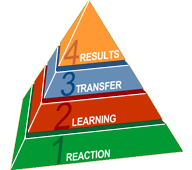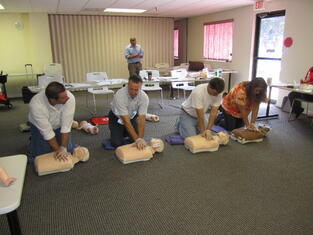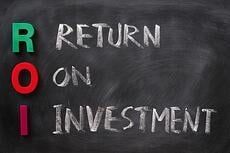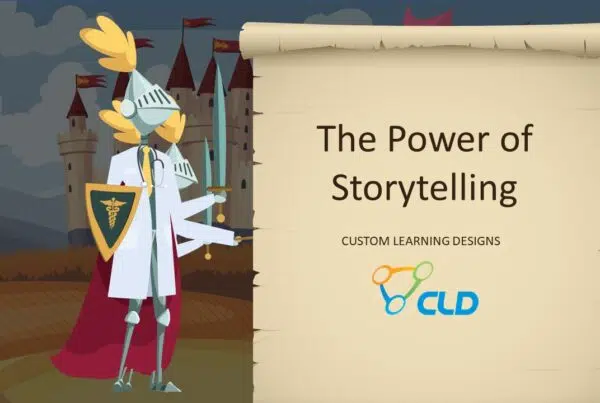How many of us have had the good fortune to attend a conference that reawakens all that we love about the profession we’ve chosen? I am one of those lucky people. I had the good fortune to attend the ASTD (American Society of Training & Development) Conference in Dallas last month, and since then I’ve been reflecting on the whirlwind conference (figuratively and literally given the unpredictable weather) and the key takeaways on ROI, the evolution of the classroom, and the importance of passion in the work you do. Sir Ken Robinson, the Monday keynote speaker, left us with the thought that a really powerful idea generates millions of other ideas, so I hope this summary will generate new ideas as you think about your own training challenges.
As background, I had the good fortune on my flight to Dallas to sit next to Cammy Bean, who’s my idea of a training and instructional design rock star for her pragmatic view of developing training.  (Take a look at her blog and see for yourself:http://cammybean.kineo.com) Although we all laughed when Ken Robinson spoke about how he would prefer not to talk to anyone on a plane until it lands, I was grateful that Cammy didn’t follow that model and did talk with me mid-air, so I was able to benefit from her approach to getting one’s voice heard. So this desire to share my thoughts was born of our conversation. Without knowing it, I was already applying lessons that I was to hear later in the keynote address delivered by John Seely Brown, since I was already looking for new ideas from adjacencies.What could be more adjacent than the seat next to Cammy?
(Take a look at her blog and see for yourself:http://cammybean.kineo.com) Although we all laughed when Ken Robinson spoke about how he would prefer not to talk to anyone on a plane until it lands, I was grateful that Cammy didn’t follow that model and did talk with me mid-air, so I was able to benefit from her approach to getting one’s voice heard. So this desire to share my thoughts was born of our conversation. Without knowing it, I was already applying lessons that I was to hear later in the keynote address delivered by John Seely Brown, since I was already looking for new ideas from adjacencies.What could be more adjacent than the seat next to Cammy?
ROI
One of my key focuses during this conference was to gather information on how organizations are calculating ROI, so I targeted a number of measurement-specific sessions. Here are 3 takes I heard on ROI.
How to Build a Business Case for Formalization of Learning Analytics
Jeffrey Berk from KnowledgeAdvisors delivered a compelling and pragmatic presentation on the importance of Big Data and how to harvest that data quickly and effectively. He listed 3 measures that can help to build a business case for the impact of training and shared practical, credible ways to apply rough data to the following components:
– Increased productivity—the most important role of L&D to improve people performance
– Reduced administration
By adding up the numbers based on rough calculations in each of these areas, he was able to demonstrate how to quantify value for a number of business cases without spending years of data gathering and emphasized how rough data can often be used to build a case for quantifying value.
 In one particular leadership training example, a company spent an average of $13,090 per year on highly visible leadership development to elevate people rated #3 (needs improvement) on their performance reviews to #1s (high performers). At the end of 2 years of training, the number of those employees that were ranked as #1s was ZERO; however, upon further examination, it was apparent that when employees returned to their jobs, managers discouraged the learning they had received. This was just one of a number of examples where the impact of management on the success of the training initiative was apparent, underscoring the critical role of management follow-through and support on the success of training initiatives.
In one particular leadership training example, a company spent an average of $13,090 per year on highly visible leadership development to elevate people rated #3 (needs improvement) on their performance reviews to #1s (high performers). At the end of 2 years of training, the number of those employees that were ranked as #1s was ZERO; however, upon further examination, it was apparent that when employees returned to their jobs, managers discouraged the learning they had received. This was just one of a number of examples where the impact of management on the success of the training initiative was apparent, underscoring the critical role of management follow-through and support on the success of training initiatives.
ROE: The Ultimate Demonstration of Training Value & Implementing the New World Kirkpatrick Four Levels
Jim and Wendy Kirkpatrick focused on first explaining and then providing tools for measuring Return-On-Expectations, or ROE. The training industry has long embraced Donald Kirkpatrick’s 4 levels of training evaluation: Reaction, Learning, Behavior, and Results.

How Organizations Are Tackling the Challenges of Measuring ROI
Jack Phillips shared the tools used by the ROI Institute to measure the impact of training through the collection of post-program data and convert that measurement to monetary benefits. The ROI Institute website provides access to samples of a number of their helpful tools, including sample scorecards, templates, and cost estimating worksheets to help quantify the monetary benefits by moving to Level 5. For me, having access to a variety of tools often stimulates ideas for how to apply different metrics, and this session provided the exposure to how organizations are tackling the challenges of measuring ROI with the aid of the ROI Institute methodology.
Program Design
In the area of Program Design, I was especially intrigued by the following session:
Flip Your Training: How to Design for Practice
In this session, Koreen Olbrish from lynda.com, explored strategies for how to design training for practice. In this model the traditional approach to training where lectures are conducted in the classroom and practice activities are conducted outside the classroom is flipped. In the flipped model, lectures are conducted outside the classroom, and the classroom time is designed to maximize practice learned in the lectures outside the classroom.
In the flipping the training approach, the focus in the classroom should be on designing for all teachable moments and consequences focused on all the places where things break down and why, as in learning how to conduct CPR. She encouraged designers to consider the reasons why people arent doing things the way you want them to and design with this in mind. One question that comes up regularly when flipping the classroom is proposed is how to ensure that learners have completed their lectures outside the classroom so they’re prepared to tackle the application-based activities when they come to class. Koreen’s response was definitive— then they shouldn’t be allowed to participate in the training. In addition, she suggested that the first activity should require learners to use the knowledge they were intended to acquire outside the classroom. Both these suggestions would certainly help to guarantee that even if the learners weren’t prepared the first time they experienced a flipped classroom, they more likely would do their pre-work for subsequent sessions.
Passion
These are samplings from just a few of the more than 80 sessions that were held during the course of the conference. One overarching theme that I also took away is the one delivered by Sir Ken Robinson regarding passion and how what makes us successful is passion for what we do. In his presentation, he emphasized that a strong passion with moderate talent will take you farther than strong talent with moderate passion. I hope that some of the ideas generated from sharing the key takeaways from just these few presentations help to reignite your passion for wanting to produce training solutions that make an impact on your organization. Know that CLD is here to further that passion with you!





